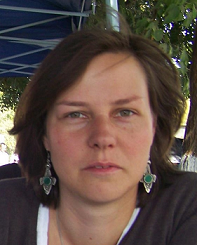
Undine Ott
Project: The Muslim Cult of Saints and Its Protagonists in Central Asia
The project will study the protagonists of the Muslim veneration of saints in Central Asia during the Mongol and Timurid periods. Its aim is to examine the social position of those who appear in the sources in connection with the cult of saints. Have believers from different social or confessional backgrounds venerated different saints or performed different ritual practices in this context? Which factors determined the networks within which worshippers moved and communicated? Has the veneration of saints been a field where communal identities were negotiated and efforts of distinction formulated? And, finally, which transformations can be noticed in Central Asia under Mongol and Timurid rule, a time of particular dynamics and high mobility, when societies were in transition, people and concepts moved? The study will be based on local histories, biographical dictionaries and pilgrimage guides written in Mongol und Timurid Central Asia itself. It will analyze these sources with regard to the individuals mentioned therein in connection with the saints’ cult and it will seek to evaluate their role and place in the societies of the Chaghatai ulus and the Timurid realm, above all.
Undine Ott was born in 1982. She received an M.A. in History and Islamic Studies from the University of Leipzig/Germany and now is a PhD student at Georg August University of Göttingen/Germany, Courant Research Centre “Education and Religion From Early Imperial Roman Times To the Classical Period of Islam” (EDRIS). Her PhD project explores the veneration of saints, the changing conceptions of sainthood and the transformation of ritual practice in the Muslim communities of Central Asia in the course of the 12th to 15th centuries – the time before and after the Mongol invasions. 2012-2013 she was employed as a researcher at the Leipzig Centre for the History and Culture of East Central Europe (GWZO), since her second field of work is the history of East Central and Eastern Europe in medieval times. She is especially interested in the methodology and exercise of comparative studies, global history and research on cross-cultural encounters and entanglements.
Research interests
Religious history of Central Asia and East Central and Eastern Europe, 8th to 15th centuries (processes of Islamization and Christianization, conversion narratives, veneration of saints); pre-modern global history.
Publications
Ott, Undine. Europas Sklavinnen und Sklaven im Mittelalter. Eine Spurensuche im Osten des Kontinents, in: WerkstattGeschichte 66-67/2015: special issue on “Europas Sklaven”, ed. by. Doris Bulach and Juliane Schiel, p. 31-53.
Medieval Conversion Narratives from East Central Europe and Central Asia: A Case Study on the Arpads and the Qarakhanids, in: Conversions: Looking for Ideological Change in the Early Middle Ages, ed. by Leszek Słupecki and Rudolf Simek (Studia Medievalia Septentrionalia 23), Vienna 2013, 265-290.
Die Repräsentation und Legitimation von Herrschaft im hochmittelalterlichen Karpaten- und Tarimbecken. Indizien aus arpadischen und qarakhanidischen Konversionserzählungen, in: Macht des Goldes, Gold der Macht? Herrschafts- und Jenseitsrepräsentation zwischen Antike und Frühmittelalter im mittleren Donauraum. Akten des 23. Internationalen Symposiums der Grundprobleme der frühgeschichtlichen Entwicklung im mittleren Donauraum in Tengelic, 16.-19.11.2011, ed. by Matthias Hardt and Orsolya Heinrich-Tamáska (Forschungen zu Spätantike und Mittelalter 2), Weinstadt 2013, 499-524.
Review of: Ott, Undine. Die Aktualität der Vormoderne. Epochenentwürfe zwischen Alterität und Kontinuität, ed. by. Klaus Ridder and Steffen Patzold (Europa im Mittelalter 23), Berlin 2013, in: WerkstattGeschichte 68/2015 (in press).
Review of: Europa im Geflecht der Welt. Mittelalterliche Migrationen in globalen Bezügen, ed. by Michael Borgolte, Julia Dücker, Marcel Müllerburg, Paul Predatsch and Bernd Schneidmüller (Europa im Mittelalter 20), Berlin 2012, in: WerkstattGeschichte 63/2013, special issue: Kinder, 122-125. [PDF]
